SpaceChain paves way for high-speed blockchain processing in space with 7th launch
Tuesday, 29 November 2022 06:03 SpaceChain has successfully launched its second Ethereum Virtual Machine (EVM) payload into space aboard a SpaceX Falcon 9 rocket, which is on its way to the International Space Station (ISS) for installation via the SpaceX Dragon 2 spacecraft. The mission marks SpaceChain's seventh successful blockchain payload launch into space, and the second integration of its payload with Velas, the world's
SpaceChain has successfully launched its second Ethereum Virtual Machine (EVM) payload into space aboard a SpaceX Falcon 9 rocket, which is on its way to the International Space Station (ISS) for installation via the SpaceX Dragon 2 spacecraft. The mission marks SpaceChain's seventh successful blockchain payload launch into space, and the second integration of its payload with Velas, the world's China successfully reignites rocket engine
Tuesday, 29 November 2022 06:03 China's rocket scientists and engineers have been working on creating reusable rockets for several years and have recently made substantial progress. The latest advance was the successful re-ignition test of the 130-metric-ton heavy-thrust liquid-propellant engine that will be tasked with lifting the reusable carrier rockets currently under development.
During the test, which took place in
China's rocket scientists and engineers have been working on creating reusable rockets for several years and have recently made substantial progress. The latest advance was the successful re-ignition test of the 130-metric-ton heavy-thrust liquid-propellant engine that will be tasked with lifting the reusable carrier rockets currently under development.
During the test, which took place in SpaceX resupply cargo capsule docks with International Space Station
Tuesday, 29 November 2022 06:03 SpaceX's 26th resupply mission for NASA docked successfully at the International Space Stattion on Sunday morning, a day after liftoff aboard the Falcon 9 rocket from the Kennedy Space Station in Florida.
The private company confirmed the docking at 7:39 a.m. Liftoff at pad 39A had been delayed from Tuesday because of bad weather.
At 2:30 p.m. Sunday, the rocket launched with mor
SpaceX's 26th resupply mission for NASA docked successfully at the International Space Stattion on Sunday morning, a day after liftoff aboard the Falcon 9 rocket from the Kennedy Space Station in Florida.
The private company confirmed the docking at 7:39 a.m. Liftoff at pad 39A had been delayed from Tuesday because of bad weather.
At 2:30 p.m. Sunday, the rocket launched with mor 3-D Radargram brings new focus to Mars' north polar cap
Tuesday, 29 November 2022 06:03 A new enhanced 3-D radar image offer a greatly improved view of the interior of the Martian north polar cap, according to a paper led by Planetary Science Institute Senior Scientist Nathaniel Putzig.
Putzig's team, which included PSI researchers Matthew Perry, Isaac Smith, Aaron Russell and intern Isabella Mueller, produced and analyzed the 3-D image using observations obtained with the Sh
A new enhanced 3-D radar image offer a greatly improved view of the interior of the Martian north polar cap, according to a paper led by Planetary Science Institute Senior Scientist Nathaniel Putzig.
Putzig's team, which included PSI researchers Matthew Perry, Isaac Smith, Aaron Russell and intern Isabella Mueller, produced and analyzed the 3-D image using observations obtained with the Sh Non-detection of key signal helps determine what first galaxies were and were not like
Tuesday, 29 November 2022 06:03 Researchers have been able to make some key determinations about the first galaxies to exist, in one of the first astrophysical studies of the period in the early Universe when the first stars and galaxies formed, known as the cosmic dawn.
Using data from India's SARAS3 radio telescope, researchers led by the University of Cambridge were able to look at the very early Universe - just 200 m
Researchers have been able to make some key determinations about the first galaxies to exist, in one of the first astrophysical studies of the period in the early Universe when the first stars and galaxies formed, known as the cosmic dawn.
Using data from India's SARAS3 radio telescope, researchers led by the University of Cambridge were able to look at the very early Universe - just 200 m TI expands space-grade product range
Tuesday, 29 November 2022 06:03 Texas Instruments (TI) (Nasdaq: TXN) has announced an expansion in its portfolio of space-grade analog semiconductor products in highly reliable plastic packages for a diverse range of missions. TI developed a new device screening specification called space high-grade in plastic (SHP) for radiation-hardened products and introduced new analog-to-digital converters (ADCs) that meet the SHP qualifi
Texas Instruments (TI) (Nasdaq: TXN) has announced an expansion in its portfolio of space-grade analog semiconductor products in highly reliable plastic packages for a diverse range of missions. TI developed a new device screening specification called space high-grade in plastic (SHP) for radiation-hardened products and introduced new analog-to-digital converters (ADCs) that meet the SHP qualifi Momentus signs contract with Australian Research Centre to place satellite in orbit
Tuesday, 29 November 2022 06:03 Momentus Inc. (NASDAQ: MNTS) has signed a contract with the CUAVA Training Centre at the University of Sydney to deploy the CUAVA-2 CubeSat in low-Earth orbit in October 2023.
CUAVA is the Australian Research Council Training Centre for CubeSats, Uncrewed Aerial Vehicles, and their Applications. CUAVA is a partnership centered at the University of Sydney that aims to fundamentally change t
Momentus Inc. (NASDAQ: MNTS) has signed a contract with the CUAVA Training Centre at the University of Sydney to deploy the CUAVA-2 CubeSat in low-Earth orbit in October 2023.
CUAVA is the Australian Research Council Training Centre for CubeSats, Uncrewed Aerial Vehicles, and their Applications. CUAVA is a partnership centered at the University of Sydney that aims to fundamentally change t USC works with Polaris Dawn to study in-flight space medicine
Tuesday, 29 November 2022 06:03 Today's spaceflights typically last a few days to a few months, so onboard medical treatment is mostly limited to first aid. But researchers are increasingly exploring new terrain-known as in-flight space medicine-that will be critical for maintaining astronauts' health during longer missions, such as the 21-month roundtrip to Mars.
Polaris Dawn, the first of three missions in the Polaris
Today's spaceflights typically last a few days to a few months, so onboard medical treatment is mostly limited to first aid. But researchers are increasingly exploring new terrain-known as in-flight space medicine-that will be critical for maintaining astronauts' health during longer missions, such as the 21-month roundtrip to Mars.
Polaris Dawn, the first of three missions in the Polaris Glacier calving and a whole lot of mixing
Tuesday, 29 November 2022 06:00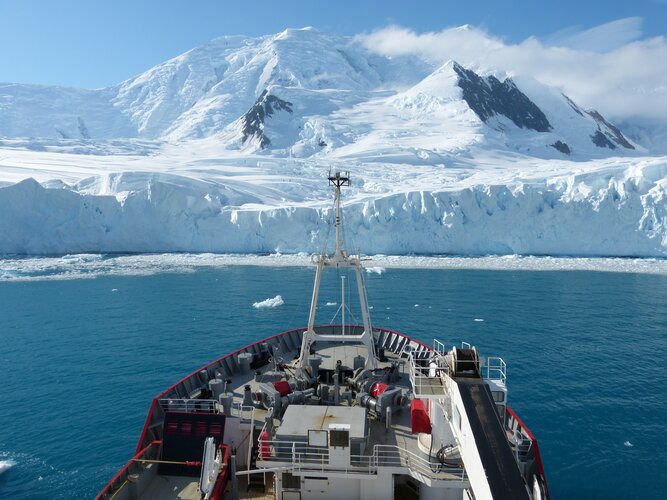
It’s no surprise that when a massive lump of ice drops off the edge of a glacier into the sea, the surface waters of the ocean get pretty churned up. However, in addition to causing tsunamis at the surface of the ocean, recent research has led to the discovery that glacier calving can excite vigorous internal tsunami waves – a process that has been neglected in driving ocean mixing in computer models.
Space Force delivers final payload for Space Norway’s arctic broadband mission
Tuesday, 29 November 2022 00:07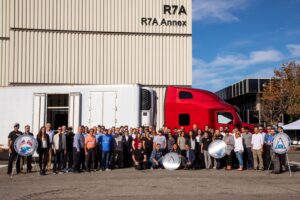
The U.S. Space Force announced Nov. 28 it delivered the second and final military communications payloads that will launch in 2023 on Space Norway’s Arctic Satellite Broadband Mission
The post Space Force delivers final payload for Space Norway’s arctic broadband mission appeared first on SpaceNews.
Space Force orders three GPS satellites for $744 million
Monday, 28 November 2022 23:00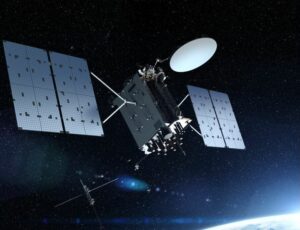
The U.S. Space Force announced Nov. 28 it has ordered three GPS 3F satellites from Lockheed Martin for $744 million.
The post Space Force orders three GPS satellites for $744 million appeared first on SpaceNews.
Demonstration of new layer of missile-warning satellites planned for 2026
Monday, 28 November 2022 22:41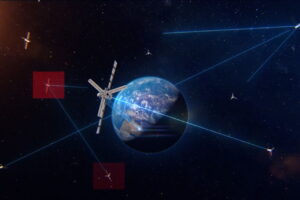
The U.S. Space Systems Command announced Nov. 28 that two satellite designs — one by Millennium Space Systems and the other by Raytheon Intelligence & Space — passed critical reviews and will move into the next phase of development.
NASA's Lunar Flashlight SmallSat readies for launch
Monday, 28 November 2022 21:10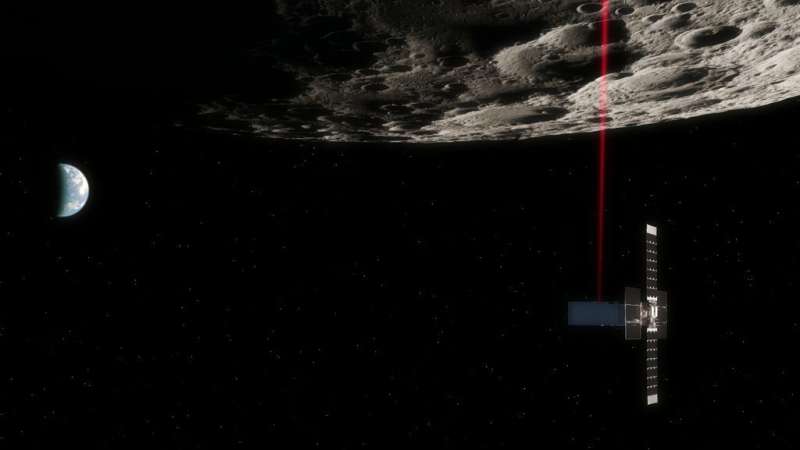
When NASA's Lunar Flashlight launches no earlier than Nov. 30, the tiny satellite will begin a three-month journey, with mission navigators guiding the spacecraft far past the moon. It will then be slowly pulled back by gravity from Earth and the sun before settling into a wide science-gathering orbit to hunt for surface water ice inside dark regions on the moon that haven't seen sunlight in billions of years.
No larger than a briefcase, Lunar Flashlight will use a reflectometer equipped with four lasers that emit near-infrared light in wavelengths readily absorbed by surface water ice. This is the first time that multiple colored lasers will be used to seek out ice inside these dark craters.
SpaceX gives Space Coast 52nd launch of the year
Monday, 28 November 2022 20:51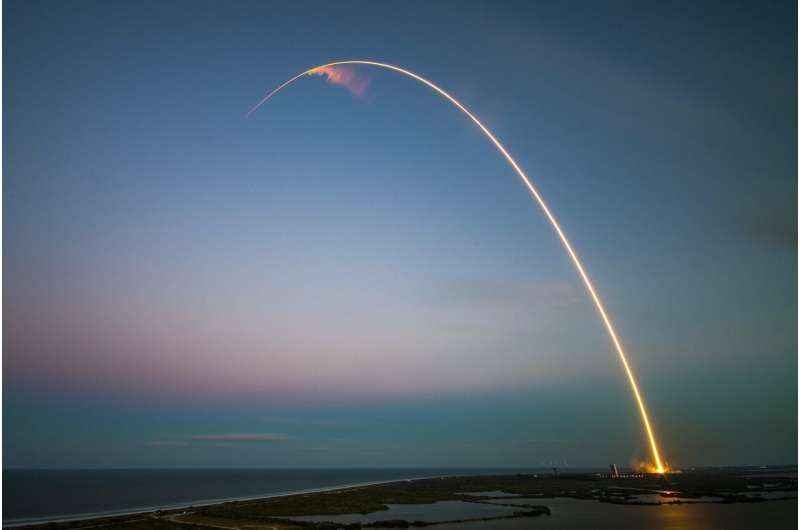
A SpaceX Falcon 9 rocket launched Saturday from Kennedy Space Center on the 52nd successful flight of the year from the Space Coast.
The CRS-26 mission lifted off from Launch Pad 39-A on a resupply run to the International Space Station at 2:20 p.m.
A brand-new cargo Dragon spacecraft is carting up 7,700 pounds of food, scientific investigation and supplies to the station, including a pair of rollout solar arrays to help with power supply.
"Everyone is anxious to see the science kick off as soon as docking occurs," said Jeff Arend with NASA's systems engineering and integration office for the ISS.
That includes a study that will let the ISS crew grow dwarf tomatoes as part of NASA's plans to support long-term human space travel needs. A related investigation called BioNutrients-2 looks to produce on-demand nutrients by using combination of yogurt, a yeast-based beverage, and the fermented milk drink kefir.
Several student-led experiments are making the flight as well, including three payloads supported by central Florida nonprofit SpaceKids Global and the Girl Scouts of Citrus Council. One of those will investigate how brine shrimp, aka sea monkeys, behave in microgravity.
Air-breathing ion engines could continuously boost spacecraft anywhere there's an atmosphere
Monday, 28 November 2022 17:25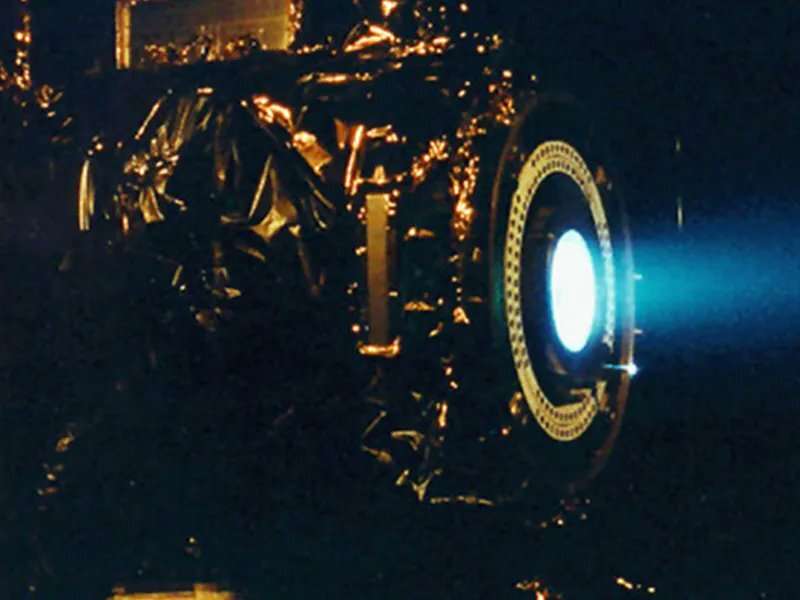
Staying in orbit can be challenging, at least for lower orbits that are more affected by Earth's atmosphere. But, such orbits also come with advantages, such as better vantage points for new commercial operations such as Earth Observation and telecommunications connections. So there is an incentive for anyone who can figure out how to functionally keep a satellite in orbit at those lower altitudes for long periods. One of the best paths toward that goal seems to be an ion engine that takes in atmospheric particles and uses them for thrust. Now, a recently released paper explores potential use cases for such an engine and suggests a path toward their commercialization.
One of the biggest problems with maintaining very low Earth orbit (VLEO) is fuel. At those altitudes, usually considered below 450 km from the surface or about as high as the space station, the atmosphere drags on anything orbiting, which requires a consistent push from an engine to counteract.

